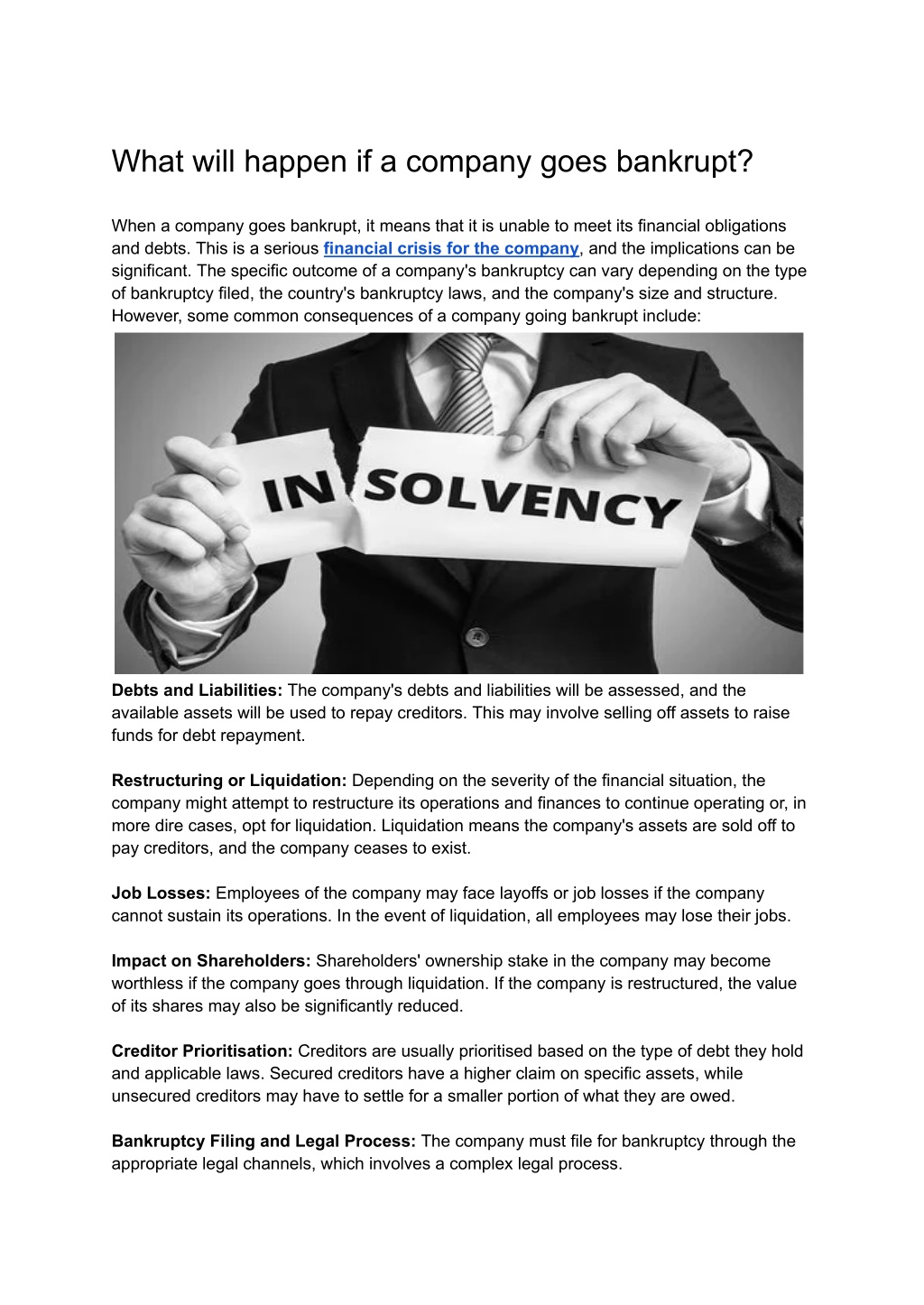Navigating Company Administration: Understanding the Process in the UK
Navigating Company Administration: Understanding the Process in the UK
Blog Article
The Process and Repercussions of a Company Getting Into Administration
As a firm deals with financial distress, the choice to go into administration marks an essential point that can have far-reaching ramifications for all involved parties. The procedure of going into management is complex, including a series of actions that intend to browse the company in the direction of potential healing or, in some cases, liquidation.
Review of Business Management Process
In the realm of company restructuring, a crucial initial action is gaining a detailed understanding of the intricate business administration procedure. Company management describes the formal insolvency procedure that intends to rescue an economically troubled company or accomplish a far better result for the business's financial institutions than would be possible in a liquidation circumstance. This procedure involves the appointment of an administrator, who takes control of the business from its supervisors to analyze the financial circumstance and identify the very best strategy.
During management, the firm is approved defense from lawful action by its creditors, supplying a postponement duration to formulate a restructuring plan. The administrator deals with the firm's management, lenders, and other stakeholders to design a strategy that might involve marketing business as a going concern, reaching a company voluntary arrangement (CVA) with creditors, or ultimately putting the business into liquidation if rescue efforts verify useless. The main goal of business management is to take full advantage of the go back to lenders while either returning the business to solvency or closing it down in an organized fashion.

Functions and Responsibilities of Administrator
Playing a crucial duty in managing the company's monetary events and decision-making procedures, the administrator thinks considerable obligations during the company restructuring process. The key task of the administrator is to act in the most effective rate of interests of the business's financial institutions, intending to achieve one of the most beneficial result possible - company administration uk. This includes carrying out an extensive assessment of the company's monetary scenario, creating a restructuring strategy, and carrying out strategies to make best use of returns to lenders
Additionally, the manager is accountable for liaising with various stakeholders, including staff members, suppliers, and regulative bodies, to make certain transparency and compliance throughout the management process. They need to additionally connect successfully with shareholders, supplying routine updates on the business's development and seeking their input when necessary.
Additionally, the manager plays a vital role in handling the daily operations of business, making vital choices to maintain continuity and maintain value. This includes assessing the feasibility of various restructuring alternatives, negotiating with creditors, and ultimately guiding the business towards a successful leave from administration.
Influence On Company Stakeholders
Assuming a vital setting in looking after the company's decision-making procedures and monetary events, the manager's actions during the corporate restructuring process have a direct influence on different business stakeholders. Shareholders may experience a decline in the value of their investments as the firm's economic difficulties are addressed. Creditors, including lending institutions and vendors, might deal with uncertainties concerning the repayment of financial debts owed to them. Staff members frequently encounter job insecurities because of potential discharges or modifications in work problems as component of the restructuring initiatives. Customers might experience interruptions in services or product accessibility throughout the administration procedure, impacting their count on and commitment in the direction of the firm. Furthermore, the community where the firm operates can be affected by potential task losses or modifications in the business's procedures, influencing local economic situations. Effective interaction from the administrator to stakeholders is critical in handling assumptions, alleviating concerns, and promoting openness throughout the administration procedure.
Legal Effects and Obligations
During the process of firm management, mindful factor to consider of the lawful implications and obligations is critical to make sure conformity and shield the interests of all stakeholders entailed. When a company enters administration, it triggers a collection of lawful requirements that must be complied with. Among the key commitments is for the assigned manager to act in the most effective rate of interests of the firm's creditors. This duty requires the manager to perform thorough examinations right into the company's events, analyze its economic placement, and establish a method to maximize returns to lenders.
Additionally, lawful ramifications arise worrying the treatment of employees. The manager needs to comply with work regulations concerning redundancies, employee legal rights, and obligations to provide necessary info to employee reps. Failing to comply check my source with these lawful requirements can result in lawsuit versus the business or its administrators.
Moreover, the firm entering administration may have contractual obligations with numerous events, consisting of customers, vendors, and landlords. In significance, understanding and fulfilling legal responsibilities are critical elements of browsing a business with the management process. into administration.
Strategies for Firm Healing or Liquidation
In thinking about the future instructions of a business in management, calculated preparation for either healing or liquidation is necessary to chart a sensible path forward. When going for company healing, key strategies may include conducting a detailed analysis of business operations to determine ineffectiveness, renegotiating contracts or leases to enhance capital, and implementing cost-cutting steps to enhance success. Furthermore, looking for brand-new investment or funding choices, branching out earnings streams, and concentrating on core expertises can all add to navigate to these guys a successful recuperation plan.

Conclusion
Finally, the procedure of a company getting in management entails the visit of a manager, that takes on the duties of taking care of the business's events. This process can have significant repercussions for numerous stakeholders, including creditors, workers, and shareholders. It is vital for companies to thoroughly consider their choices and techniques for either recuperating from economic troubles or proceeding with liquidation in order to alleviate prospective legal ramifications and responsibilities.
Firm administration refers to the formal bankruptcy treatment that intends to save a financially distressed business or attain a better result for the firm's financial institutions than would be feasible in a liquidation situation. The manager works with the company's management, lenders, and other stakeholders click here for more to create an approach that may entail marketing the business as a going concern, getting to a firm volunteer setup (CVA) with lenders, or eventually putting the business into liquidation if rescue efforts confirm useless. The key objective of firm management is to optimize the return to financial institutions while either returning the firm to solvency or shutting it down in an organized manner.
Thinking a critical placement in looking after the firm's decision-making procedures and monetary affairs, the administrator's activities throughout the business restructuring process have a straight influence on numerous firm stakeholders.In verdict, the process of a business going into administration entails the consultation of an administrator, who takes on the duties of taking care of the company's affairs.
Report this page